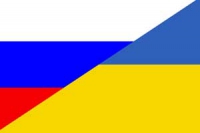
Russian and Ukrainian languages: what are the differences?
As the Russian and Ukrainian languages have common roots, they seem quite similar but in fact they have more differences than things in common.
As is well known, both Russian and Ukrainian belong to the group of eastern Slavic languages. They have common alphabet, similar grammar and essential lexical uniformity. Nevertheless, certain peculiarities in the development of Russian and Ukrainian cultures caused noticeable distinctions in the language systems.
One can find differences in the alphabet. There are some letters in the Ukrainian alphabet which are missing in the Russian alphabet and vice versa. Consequently, there are some sounds which distinguish one language from the other.
Modern research has shown that Ukrainian is closer to the Belorussian language (29 common features), Czech and Slovak (23), Polish (22), Croatian and Bulgarian (21) but it shares only 11 common features with the Russian language. Some linguists even doubt the languages belonging to the same group. Statistics testifies to the fact that only 62% words are common for both languages. According to this characteristic Russian ranks fifth as regards Ukrainian after Polish, Czech, Slovak and Belorussian. We can note that Dutch and English are 63% similar as to their vocabulary, which is more that Ukrainian and Russian. Language differences are due to the way the nations were formed. The Russian nation was formed around Moscow as its center, which resulted in filling its vocabulary with numerous Finno-Ugric and Turkic words. The Ukrainian nation was formed by uniting several southern Russian ethnic groups, so the Ukrainian language preserved its old Russian basis.
By the middle of the XVI century Russian and Ukrainian differed substantially. The texts belonging to that period are quite understandable for modern Ukrainians, whereas the documents belonging to the Ivan the Terrible epoch hardly lend themselves to translation by modern Russians. In the late XIX century The Ukrainian literary language starts its formation and gradually it gets rid of the ties with Russian. In particular, it rejects the church Slavonic words in favor of the words from dialects and from Eastern European languages. As a result, the Ukrainian vocabulary is much closer to Eastern European languages than to Russian.
An important feature of the Ukrainian language is its dialectical diversity. This is explained by the fact that different parts of Western Ukraine belonged to other countries: Austria, Hungary, Romania, Poland, Czechoslovakia. Thus, people living in Kiev sometimes cannot understand those living in Ivano-Frankovsk, while people from Moscow and Siberia speak the same language.
Despite the fact that Russian and Ukrainian have a lot of common words, these words may differ in their meanings. For example, both languages have the word “zhal” which is written and pronounced identically. But in Russian it is an adverb meaning regret or pity, while in Ukrainian apart from being an adverb with the same meaning, this word is a noun meaning sorrow or grief.
Some foreign students note that Ukrainian is closer to European languages than to the Russian language, that is why translations from French or English into Ukrainian are easier than into Russian. This is partly due to certain grammatical constructions which are characteristic of European languages and Ukrainian but are absent in Russian. This concerns, for example, the verb “to have” in the modal construction “I have to come”. In the Russian language “to have” lost this meaning long ago. But there are cases when the Russian language uses loanwords from European languages while Ukrainian does not. Thus, the names of months are borrowed from Latin in Russian though in Ukrainian they are of Slavic origin.




